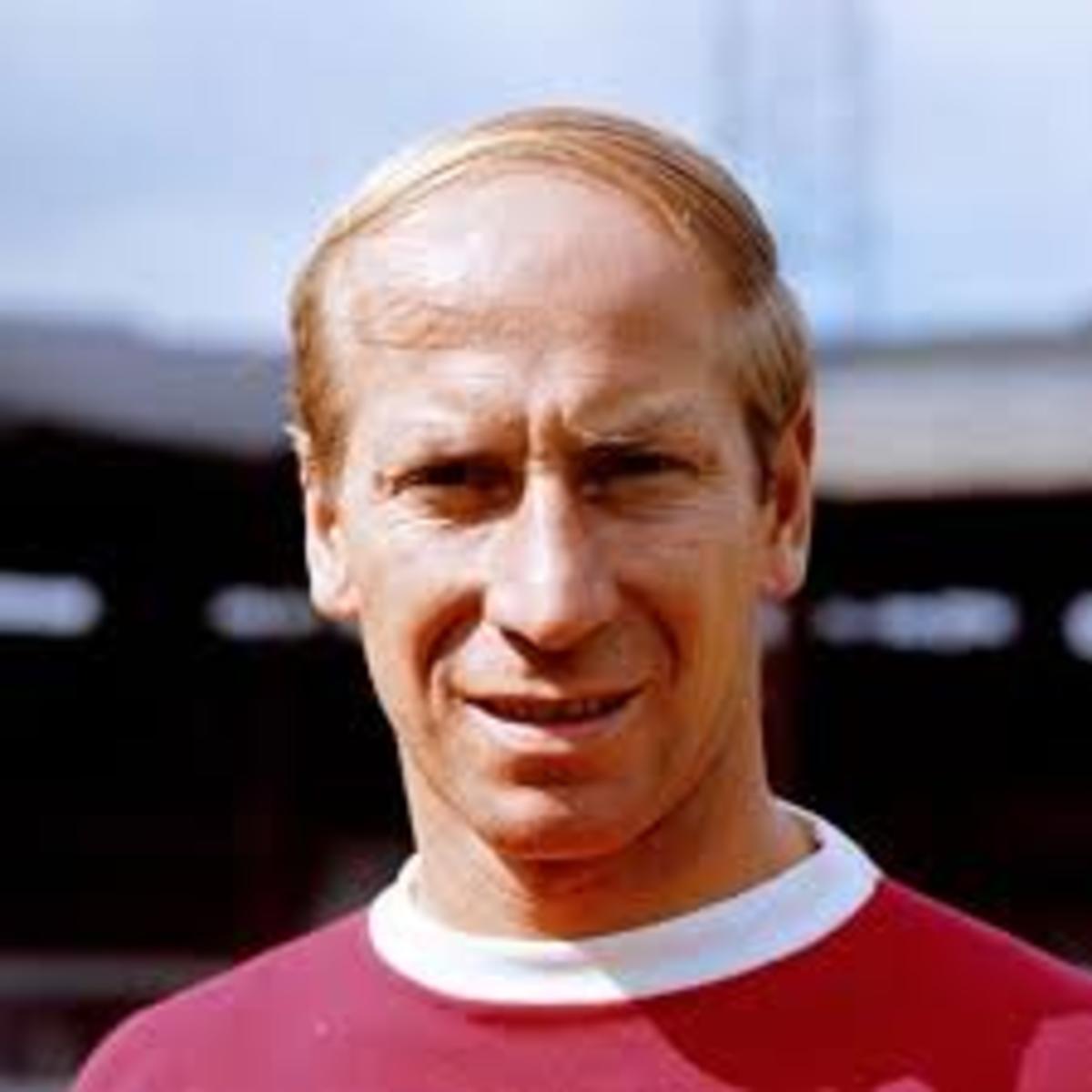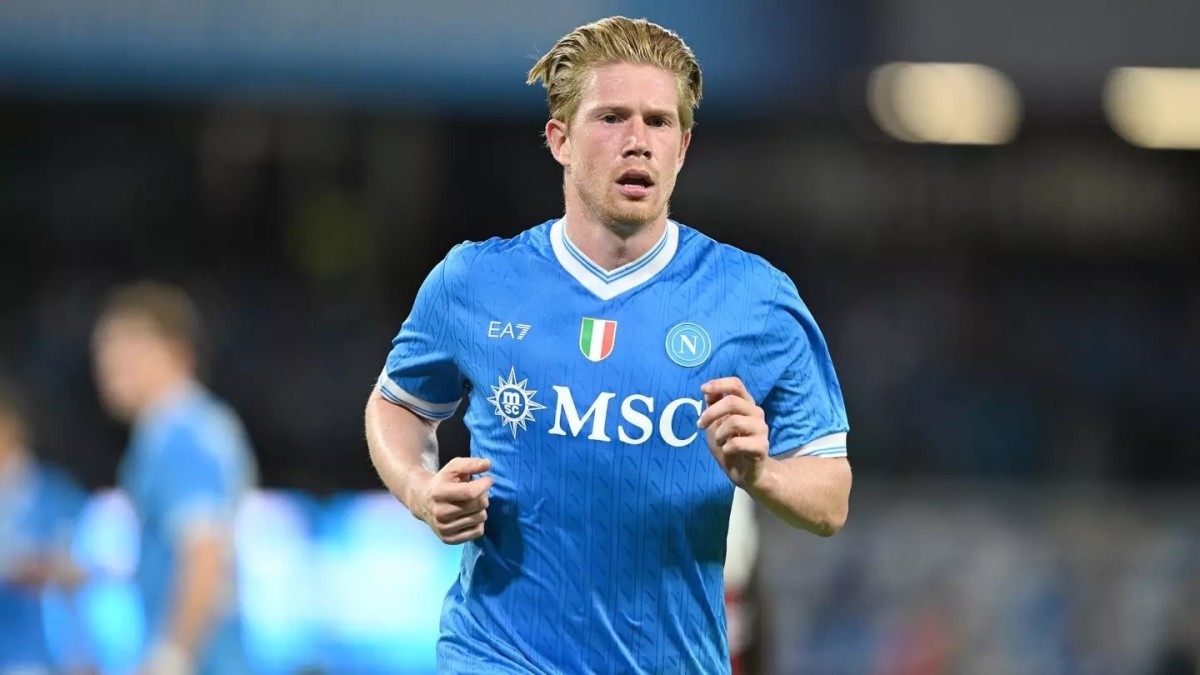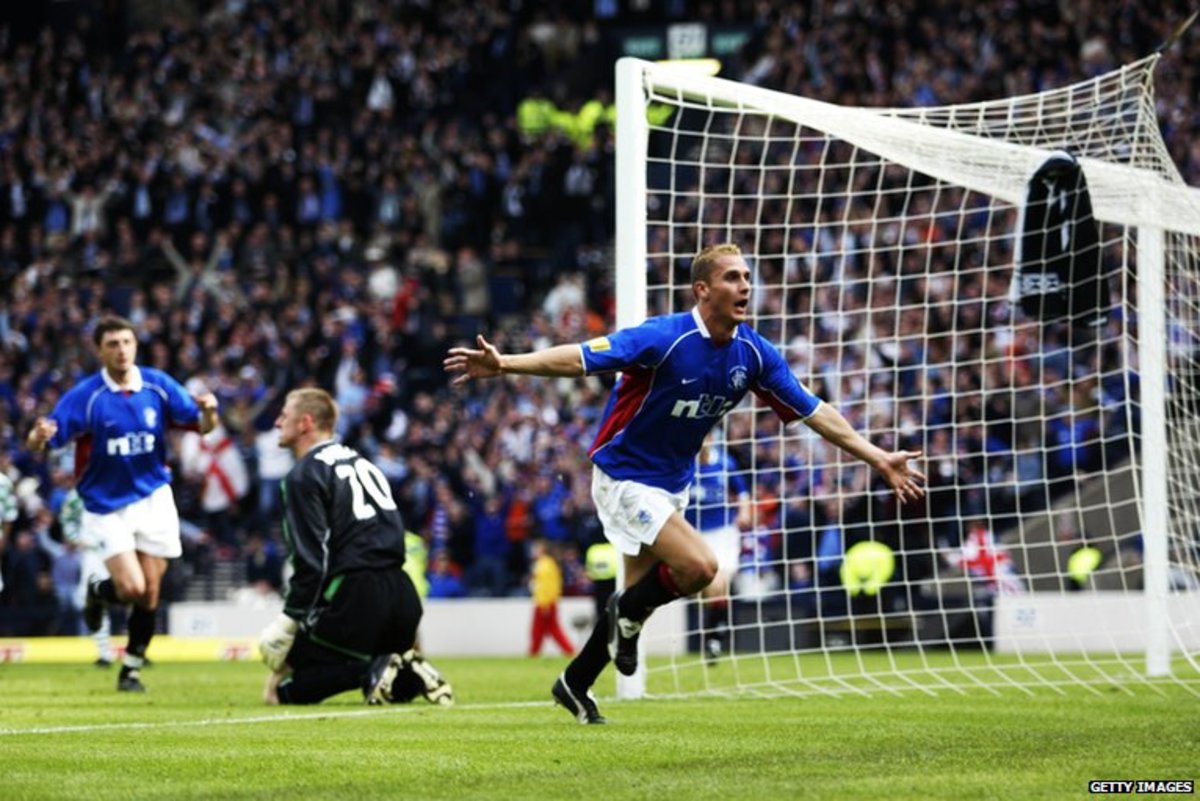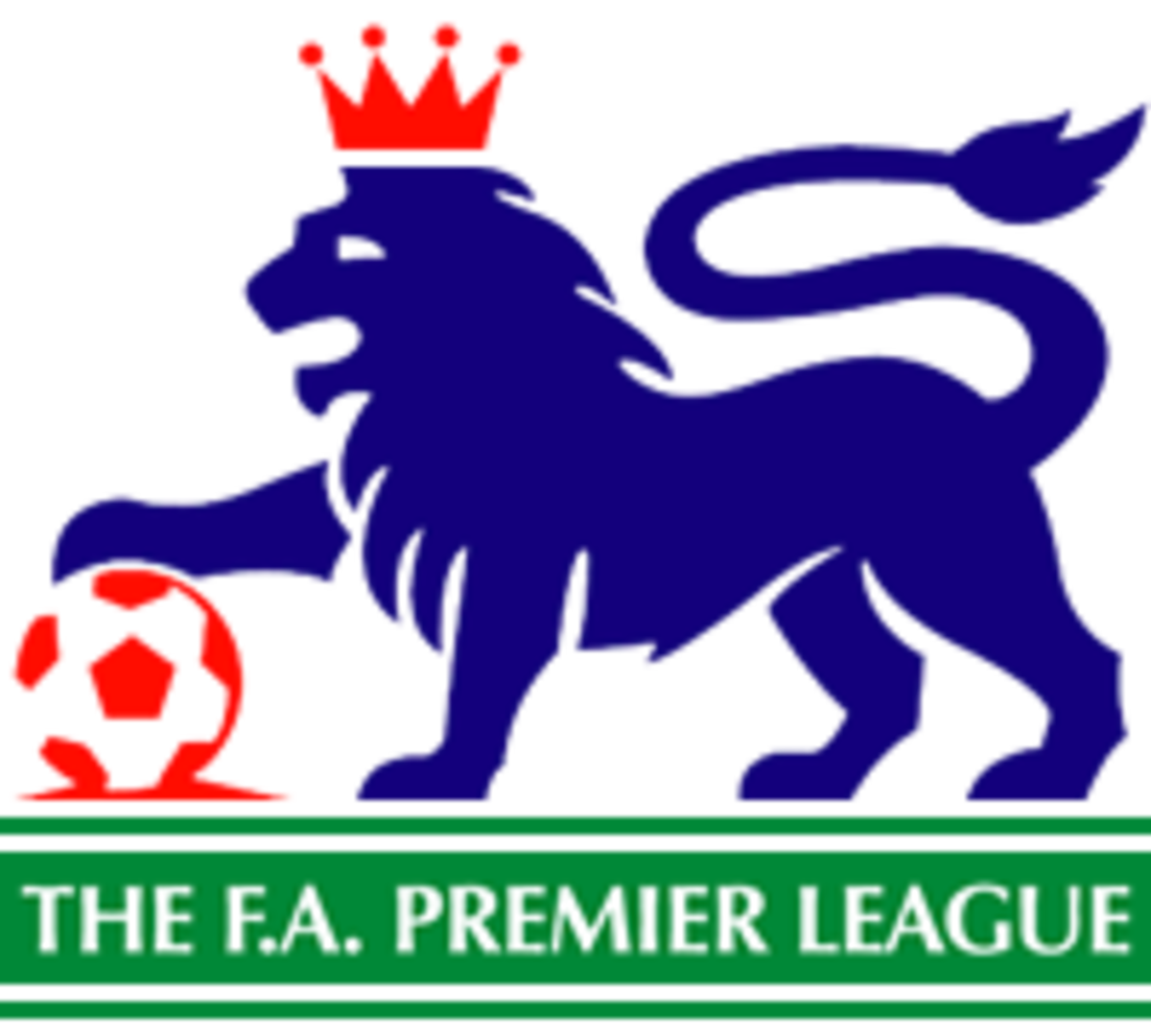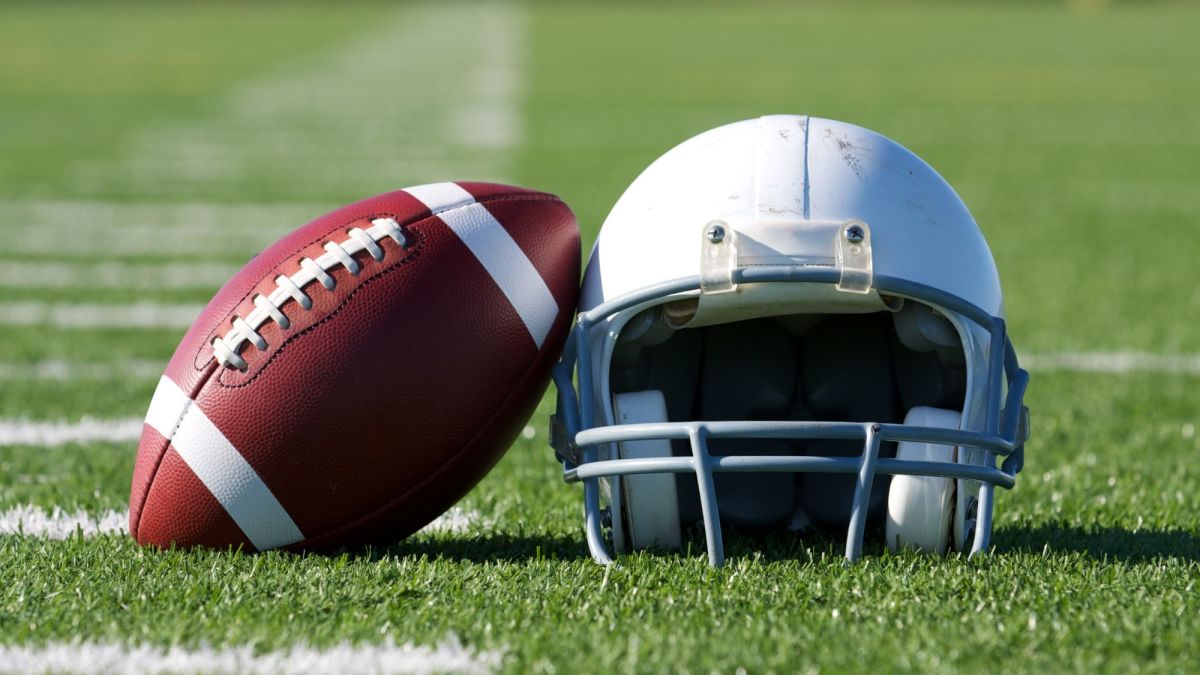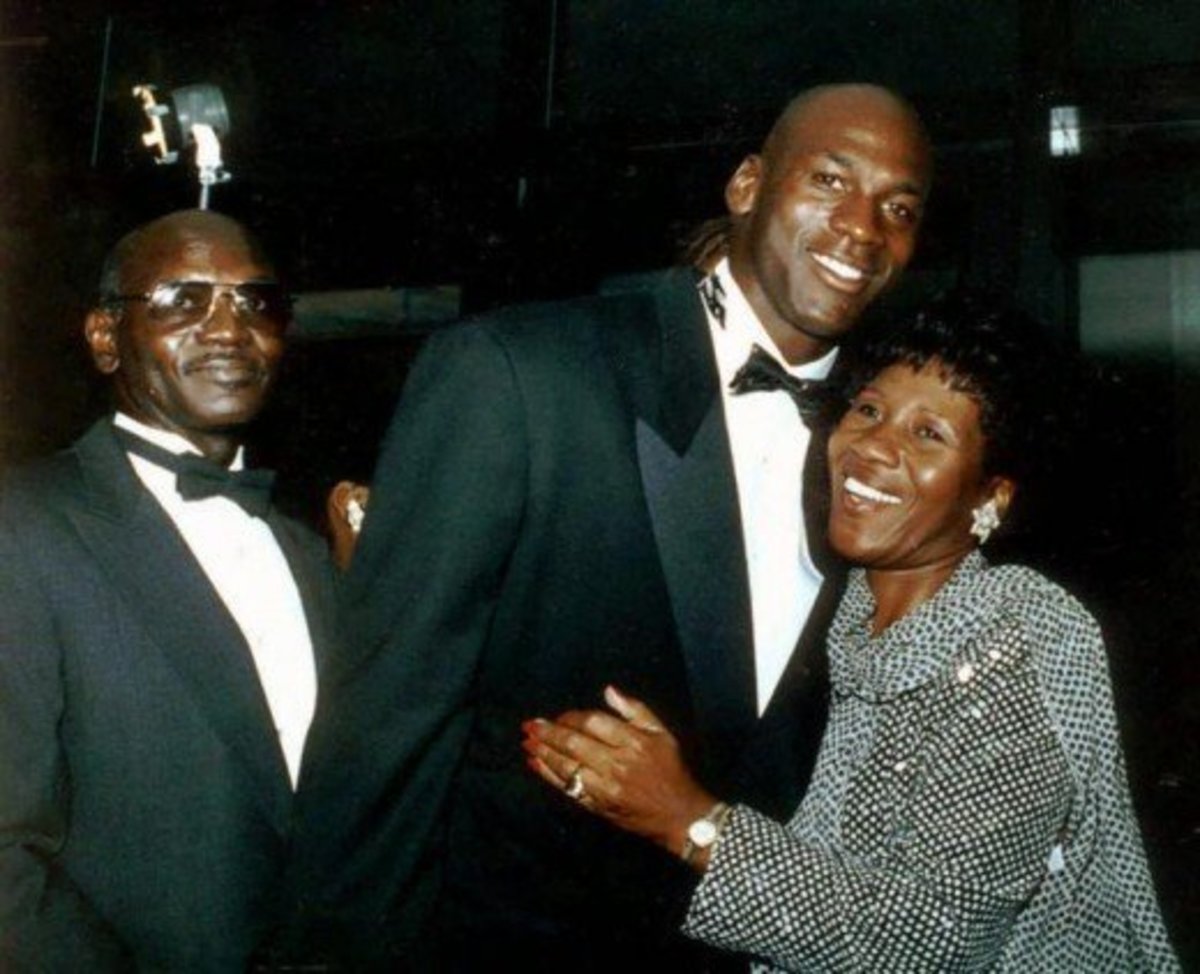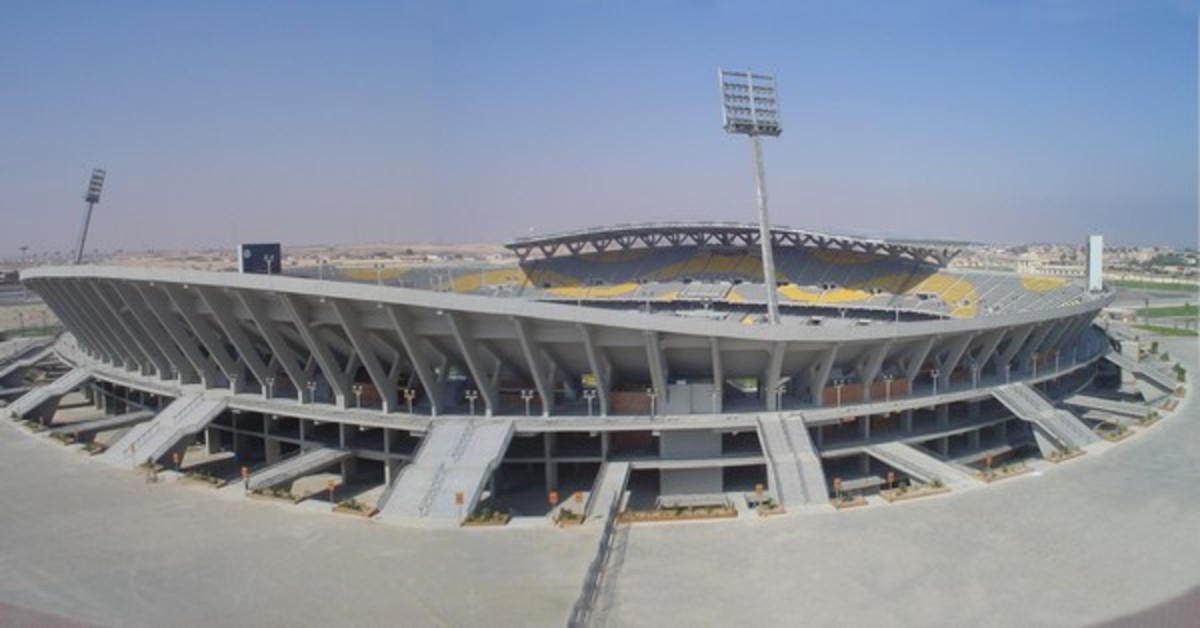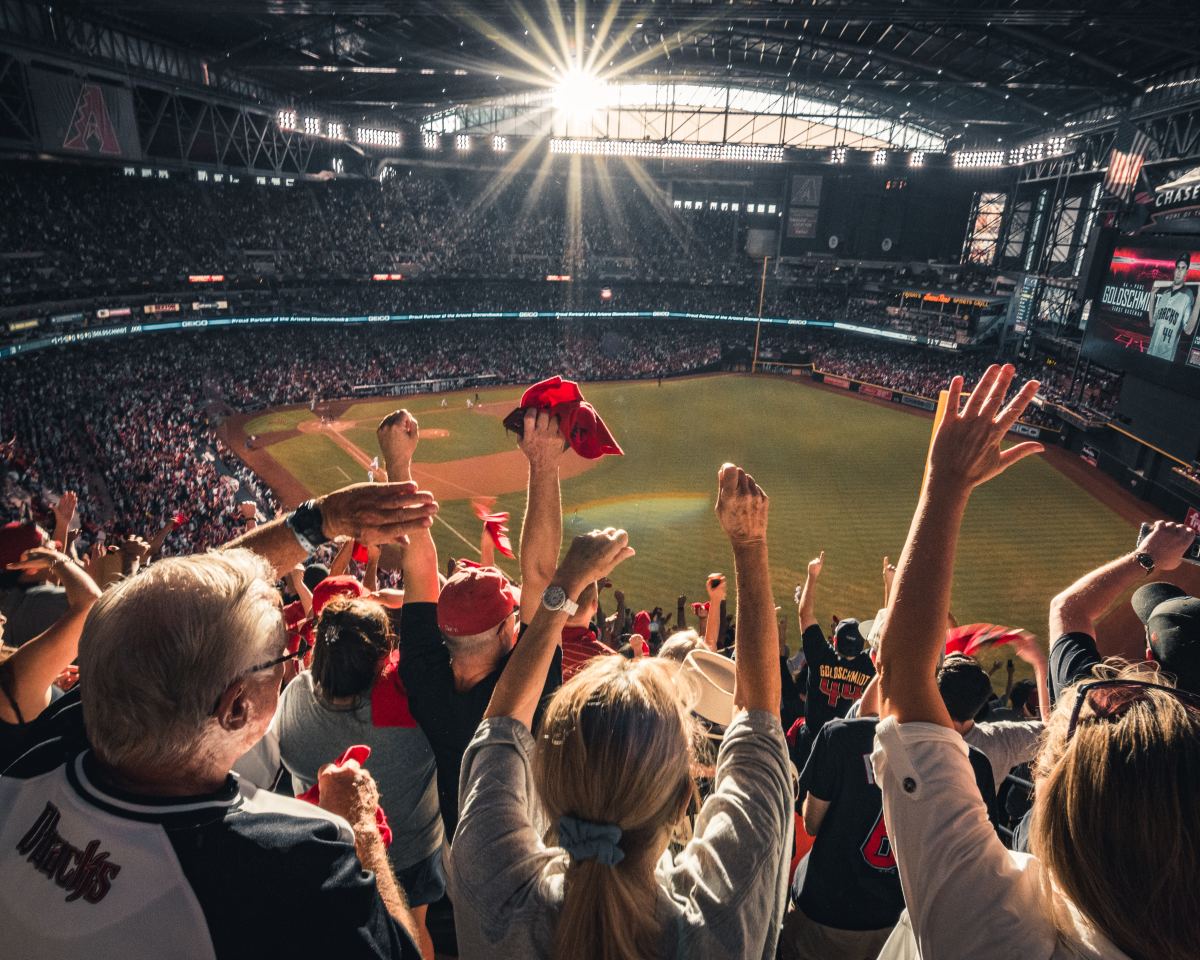Where Are They Now: Golden Boy Award Winners (2003–2013)
From once-in-a-lifetime prodigies to forgotten wonderkids, the Golden Boy award has had a mixed track record, predicting football’s next superstar. Established in 2003 by Tuttosport, the award is presented each year to the most impressive young male footballer playing in Europe. Voted upon by sports journalists, all nominees must be under the age of 21 and have played in a European nation’s top league. Twenty-two of the game’s most gifted prospects have claimed the honour, but how many truly lived up to the hype? While some talents carried on to become generation-defining players, others crumbled under the pressure, fading into obscurity. Carrying the weight of expectation, here’s how the careers of the first eleven Golden Boy winners have unfolded so far.
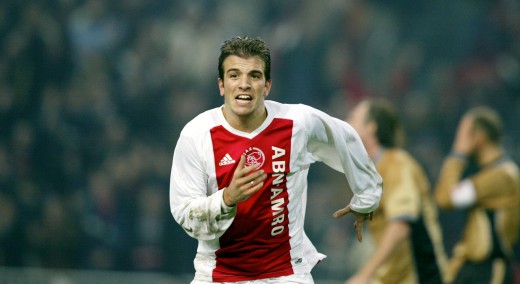
2003 - Rafael van der Vaart
A worthy inaugural recipient of the Golden Boy award, Rafael van der Vaart was a mesmerising talent at his absolute best. A prolific goal scorer for his position, the attacking midfielder was sublime on his day. A magical left foot, the Netherlands international compensated for his lack of speed with his intelligence and masterful vision, brilliantly finding space between opposition lines. Blessed with the instinct and confidence to flourish at the top level of European football, his career was unfortunately impeded by ongoing injuries and health issues.
Moving to Ajax in 1993, he made his senior debut in 2000 at the age of 17. Playing an attacking midfielder, Rafael began to reveal glimpses of his immense potential, scoring nine goals in 32 appearances during the 2000–01 season. By 18, he had the world at his feet, with the Dutchman quickly emerging as a generational prospect. In the midst of a rich vein of form during the 2001/02 season, Van der Vaart suffered the first injury of his career. A season-ending knee injury, which required an operation to remove his entire meniscus, was the first setback of a career that would become defined by ill fortune.
Returning in the 2002–03 season, he finished the campaign as Ajax’s top goal scorer. Despite missing a large portion of the season, the prolific midfielder scored 22 times in 30 appearances, reaffirming his status as Europe’s next breakout star. By 2003, the inaugural Golden Boy recipient was widely recognised across the football world, drawing lofty comparisons to Johan Cruyff.
By the latter half of 2003, there were growing concerns over his health and fitness, with Raf admitting to being overweight in the early months of the 03/04 campaign. Speculation grew over whether his Golden Boy status and subsequent stardom were hindering his potential. Still, the Dutch international managed to silence his critics through a strong second half of the campaign, guiding Ajax to another Eredivisie title. 2005 marked his final year with the club, a campaign marred by off-field incidents, including refusing to play out of position in a UEFA Champions League game, which led to him being stripped of the captaincy.
Firmly established as one of the Netherlands' top stars, Rafael van der Vaart’s first move abroad certainly raised some eyebrows. Despite the European summer of 2005 buzzing with speculation from the likes of AC Milan and Manchester United, the prolific midfielder made the surprising decision to sign with Bundesliga side Hamburger SV.
A tenure cursed by further injuries and a lack of team success, van der Vaart continued to show moments of his incredible talent, earning a nomination for the 2008 Ballon d’Or. The gifted player continued to be linked to several clubs across Europe, eventually signing with Spanish giants Real Madrid, in a move many had long anticipated. At Los Blancos, Van der Vaart lasted only two seasons before falling out of favour with then-manager Manuel Pellegrini. Mainly deployed as an impact substitute, his opportunities were limited, giving fans only glimpses of his dazzling talent and attacking firepower.
A move to Tottenham Hotspur would arguably mark the peak of his career, with the Dutchman finally having a team built around his playstyle. With Gareth Bale and Luke Modric playing off him, Van der Vaart set White Hart Lane alight, finding a level of consistency that had eluded him for years. Demonstrating the creativity and technique that once had him touted as a generational prospect, he quickly endeared himself to the Spurs faithful. Later stints in Germany, Spain and Denmark rounded out his career, retiring in 2019 for Esbjerg. Despite often being overshadowed by Wesley Sneijder, the prominent attacking midfielder forged a formidable legacy for the Netherlands international team, joining the prestigious group of players to surpass 100 caps for the Oranje.
A career derailed by injuries, lack of fitness and questionable career moves, Rafael van der Vaart’s success at the top level of European football was limited. Perhaps not reaching the elite levels of ability many have hoped for, the Dutch midfielder’s talent was undeniable. Across nearly two decades, he produced moments of brilliance, mesmerised fans, and built a career that most footballers could only dream of.
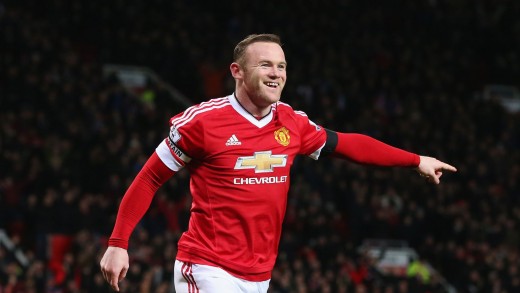
2004 - Wayne Rooney
Lauded as one of the greatest teenage footballers of all time, Wayne Rooney rewrote the history books throughout his career, yet for some, he still fell short of expectations. Bursting onto the scene at Everton, the Englishman earned instant acclaim for his blistering space, chaotic energy and technical prowess, excelling across all attacking positions. A prolific goalscorer and constant menace in the final third, Wazza was praised for his relentless stamina and high work-rate, with his selflessness and commitment becoming hallmarks of his latter years at Manchester United.
Debuting for Everton at 16 years old, Rooney was swiftly dubbed the “White Pele” with his thunderbolt against Arsenal, famously ending their undefeated run. Quickly becoming a household name, the dynamic forward was England’s golden boy, earning a call-up for the 2004 UEFA European Championships. The nation’s youngest ever goalscorer, Wayne, would be named in the team of the tournament, as he scored four goals in an impressive campaign. His explosive introduction to football paved the way for a lucrative transfer to Manchester United, signing for £25.6 million in 2004.
A prolific finisher and fan favourite, Rooney enjoyed a hall-of-fame tenure at Old Trafford, claiming multiple Premier League titles and a UEFA Champions League crown. Named PFA Player of the Year in 2009, the generational talent remains the club’s all-time leading goal scorer, as he continued to adapt his game in his latter seasons. With 53 goals in 120 international appearances, the fearless striker is England’s most capped outfield player and second-top goal scorer. A complete monster in his prime, Wayne Rooney was unstoppable at his absolute best.
Despite his illustrious resume and long list of accomplishments, criticisms remained loud and prominent. Often sacrificing personal glory to fulfil defensive duties, Rooney’s achievements were frequently overshadowed by teammates, most notably Cristiano Ronaldo. While the Portuguese forward and Lionel Messi dominated global headlines, Rooney was never considered the best player in the world, leaving many members of the English press to label him a disappointment.
His stocky frame, which gave him power and dominance, also contributed to fitness struggles in his late 20s, forcing him into deeper roles as his pace and mobility waned. Off-field controversies, including a failed transfer request and drink-driving incidents, further complicated the legacy of the former face of English football.
Short stints with Everton, D.C. United and Derby County offered flashes of unbelievable talent, and tenacity captivated the world, but ultimately, the forward would retire at the age of 35. A victim of his early success and sky-high expectations, the working-class hero is still celebrated as one of the greatest players of his generation.
A generational talent punished by the weight of expectation, Rooney’s legacy still polarises football fans. Although some ponder how high his ceiling could’ve been, there’s no doubt Wayne Rooney sits in the upper echelons of the all-time greats of English football.
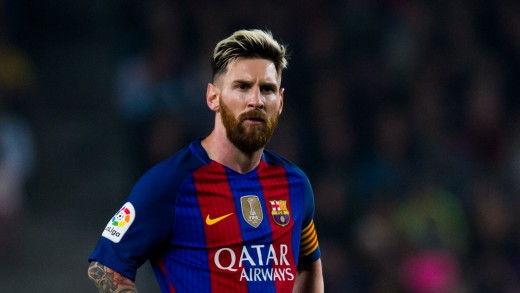
2005 - Lionel Messi
A player that needs no introduction, Lionel Messi, smashed even the grandest of expectations, ascending to the upper echelon of football immortality. To date, the only Ballon d’Or winner on this list, the Argentine’s legendary legacy merits its own article. Though his greatness stands almost unmatched, his most enduring comparison remains with fellow Argentine icon Diego Maradona.
With a low centre of gravity and an almost supernatural balance, Messi weaves through defenders as if the ball were glued to his feet. His bursts of acceleration leave opponents clutching at shadows, earning him the legendary nickname La Pulga Atómica (The Atomic Flea). A master of both goals and creation, he conjures chances from thin air, slicing through defences with vision, dribbling, and precision finishing that defy logic. As he evolved, Messi dropped deeper, orchestrating play with surgical calm, conserving energy for moments of divine intervention while resisting both the passage of time and injury. At his peak, he roamed freely, linking with teammates, dismantling systems and conducting entire matches with a glance.
The journey of the boy from Rosario begins at Newell’s Old Boys, where the football prodigy spent much of his youth career. After overcoming early adversity in the form of a growth hormone deficiency and scoring over 500 goals for the youth academy, Barcelona’s iconic La Masia came calling.
After lobbying from senior players, Lionel made his professional debut in 2004 against Espanyol. Deployed on the right wing, Messi continued to impress, becoming (at the time) the youngest goal scorer in the club’s history. By 2005, his legendary career on the international stage began, earning Player of the Tournament honours at the 2005 FIFA U-20 World Cup.
By the 2005–06 season, the elusive genius had become a fixture in Barcelona’s starting eleven. Though the club wavered in the years that followed, his ascent never faltered. His 2007 hat-trick in the El Clásico confirmed his place among the elite, and by 2009, he stood alone. The heartbeat of Pep Guardiola’s iconic side, he claimed his first Ballon d’Or as Barcelona achieved an unprecedented sextuple.
In the years that followed, the records kept tumbling as the little wizard etched his name deeper into history. From a masterful Champions League Final in 2011 to that unforgettable El Clásico in 2017, Messi’s feats blurred the line between sport and myth. Accolades that cannot be fathomed in a mere few hundred words, the Argentine’s greatest individual triumph arguably came in 2012, when he scored a world-record 91 goals. Shattering the history books yet again, few players in history can match his sustained footballing influence.
As time passed and the pages of history bowed before him, Messi transitioned from the world’s best to one of football's eternal figures. Even when deployed deeper, his first touch, vision and ability to tilt a match with a single pass never faded. From his farewell in Spain to his spell in Paris to his stateside exhibition in Miami, the magician continued to astonish.
For years, the lone blemish on his career was international glory. The spectre of Maradona loomed, burdening him with a nation’s hunger for immortality. That weight was finally lifted in 2022, when he delivered Argentina their long-awaited third star. On Qatari soil, destiny was fulfilled. The illusionist became the conqueror. With all doubters silenced and the dreams of millions fulfilled, Messi completed the prophecy, achieving his lifelong dream of becoming a world champion.
Now playing out the final chapter of his career with Inter Miami, he remains a constant presence, with talk of one last World Cup in 2026. Unfortunately, his time on the pitch is inevitably dwindling. When he finally hangs up his boots, there will be no question that the 2005 Golden Boy not only fulfilled every expectation, he defined an era.
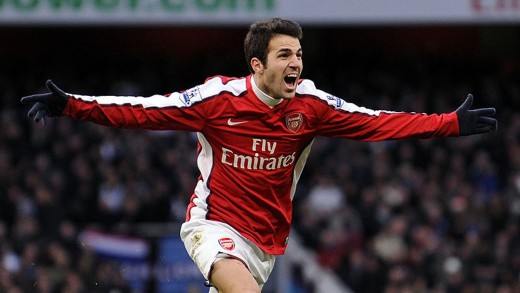
2006- Cesc Fàbregas
A legend of his time, Cesc Fàbregas’ vision, ingenuity and playmaking ability bordered on the mythical. An instinctive grasp of the intricacies of the game, the cerebral midfielder was an absolute joy to watch in his prime, showcasing a level of composure and maturity well beyond his years. One of the most imaginative players of his era, the Spaniard often dictated the tempo of play, with unworldly technical ability, inch-perfect ball control and pinpoint passing, reminiscent of his national compatriots Xavi and Iniesta. However, where the iconic Barcelona duo prioritised discipline and game orchestration, Cesc at his best would turn the balance of the game on its head, with his impact in the final third decisive.
After spending time in Barcelona’s famous La Masia academy, Fàbregas signed with Premier League club Arsenal. Unlikely to receive significant opportunities for the Catalan club, the intelligent midfielder made the move to England, where he would first rise to prominence during Arsenal’s 2003–04 League Cup campaign. Becoming the club’s youngest-ever first-team player and goalscorer, the then 16-year-old began to adjust to his new London surroundings. With injuries to senior midfielders, he seized the chance to become a vital presence, earning plaudits for his vision, passing range, and maturity beyond his years.
The 2005–06 season cemented his status as a generational talent, with the supreme playmaker becoming a regular member of the club’s starting eleven. Though his slight frame and lack of physicality (especially in contrast to his predecessor, Patrick Vieira) drew scrutiny, Cesc’s technical brilliance, creativity, and ability to link defence to attack quickly silenced doubters. His ascent to Golden Boy status was confirmed in the summer of 2006, when he became the youngest Spanish player to feature in a World Cup, holding his own on football’s biggest stage.
Cesc’s subsequent seasons in London were marked by continued individual brilliance, despite the club’s mixed team success. Continuing to chalk up goals and assists, Cesc revolutionised Arsenal, comfortably becoming the club’s most important player. Despite continuing to deliver moments of brilliance and ingenuity, the club captain ultimately sought a return home, reuniting with childhood idol Pep Guardiola at Barcelona. In one of the most prolonged transfer sagas of the 2010s, Fàbregas eventually joined the Catalan club for an initial fee of €29 million.
Amid a defining chapter in the club’s history, competition for midfield positions was fierce. Compared to his new teammates Xavi and Iniesta, Cesc offered a more direct impact on attack, with the Spaniard’s 466 goal-scoring chances created in the five years prior, with Arsenal exceeding those made by his Spanish counterparts. No longer the focal point of the team, the versatile playmaker remained an influential presence in the side, ending his first season with 15 goals and 20 assists. Despite continuing to show his immense talent and technical brilliance, the midfield maestro never truly reached his full potential whilst in Spain, never cementing a spot in the club’s starting eleven. Perfectly suited for the Catalan club’s ‘tiki-taka’ style of play, the prolific genius was never given consistent minutes in midfield, as criticisms grew regarding his physical shortcomings and struggles in big games. With a varied level of success, Cesc decided to return to England.
Signing for Chelsea in 2014, Cesc found a system that allowed him more freedom to influence play. Back in a role that leveraged his creativity, he excelled in dictating tempo, orchestrating attacks, and utilising his visionary passing. Despite playing in a less possessive system he had grown accustomed to, the Spaniard was delighted to once again be the focal figure of his side’s attack, with a solid defensive foundation under José Mourinho, ensuring the midfielder was given the license to roam. Winning the Premier League in his first season back, he reminded fans why he was regarded as one of Europe’s most gifted playmakers.
Physical struggles, including his deteriorating pace and athleticism, limited his opportunities in his latter years with the club, with the technician often deployed as an impact substitute to control games and manage midfield possession. In January 2019, Fàbregas signed for Monaco, in a tenure hampered by declining fitness and various injuries.
A forgettable spell marred by a lack of gametime, Cesc signed with Italian side Como, where he would ultimately retire and become club manager. In the early stages of what looks to be a promising managerial career, the Spaniard’s possession-based system is reminiscent of his playstyle. With a structured build-up, focus on dominating the midfield and encouragement of dynamic movement and fluid positional rotation, Cesc Fàbregas may just be football’s next great attacking manager.
Though Cesc Fàbregas may never have fully reached the towering expectations of his early career, he remains an elite midfielder and one of the most technically gifted of his generation. A victim, at times, of his surroundings and physical constraints, his ability to control the flow of the game and create moments of magic remains unquestioned. Unable to unsettle Spain’s iconic midfield trio of Xavi, Iniesta, and Busquets, who knows what Cesc’s legacy may have looked like had he been born in a different generation. Regardless of where he ranks amongst the greats, there is no doubting his technical brilliance and mythical creativity.
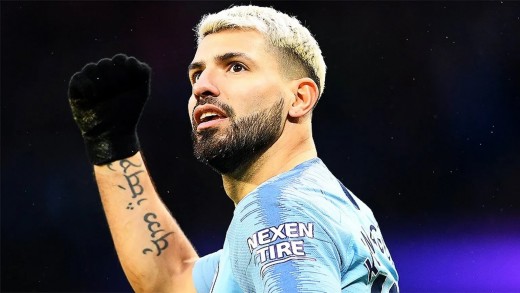
2007 - Sergio Agüero
Although the twilight of his career was derailed by serious health issues, Sergio Agüero comfortably stands amongst the greatest strikers the sport has ever seen. Manchester City’s all-time top goal scorer, the Argentine’s lightning speed, ruthless finishing, and sublime technique caused nightmares for Premier League defenders, with his intelligent movement and instinctive positioning often earning comparisons to Brazilian forward Romário. Characterised by his agility, clever link-up play and ice-cold execution in front of goal, what truly elevated Agüero was his unmatched ability to deliver on the biggest stages. Last-minute winners, season-defining performances, and clutch moments, the striker always rose to the occasion.
With 23 goals in 56 appearances, ‘Kun’ Agüero first rose to prominence in Argentina for Independiente. Impressing Europe’s elite with his dynamic dribbling and elite finishing, the powerful forward signed for Spanish club Atlético Madrid for a then-record €20 million. Easing into his new surroundings during the 2006–07 season, Sergio was arguably the most important player for the ‘Rojiblancos’ come the 2007–08 season. With Fernando Torres departing that European summer, the Argentine was given the keys to the kingdom, finishing the season with 19 goals and plenty of plaudits. From a man-of-the-match display against Barcelona to crucial goals against Real Madrid, Valencia and Sevilla, the accurate marksman had well and truly announced himself to the footballing world.
Continuing to sharpen his goal-scoring instincts, Agüero flourished in his partnership with Diego Forlán, continuing to develop his all-round game and link-up play. After a century of goals and a Europa League title, it was time for the naturally gifted prospect to take the next step in his career, signing for English club Manchester City in 2011.
Signing for a reported £35 million, the prolific goalscorer wasted no time repaying the fee, delivering one of the most memorable debut campaigns in English football history. A historic campaign from his first game against Swansea, Agüero’s meteoric rise cemented his status as one of the world’s greatest strikers, scoring 31 goals in his first season in sky blue. Despite all that he achieved in his time in the north of England, despite all the magical moments of his career, there is nothing that will ever top the brilliance of that goal…
A moment that will forever live in sporting folklore, it’s extremely appropriate that the Premier League’s most iconic moment belongs to one of its most iconic players. If you ever need an example of the incredible striker’s clutch ability, look no further.
The seasons that followed only reinforced his reputation as one of the deadliest forwards of his generation. Renowned globally for his explosive acceleration and cold-blooded finishing, Agüero consistently terrorised defences despite recurring injuries hampering his playing time. His unlucky run with injuries often limited his chances at receiving significant individual honours, with the versatile forward’s only career Golden Boot coming in the 2014–15 season. Despite the absence of individual honours, his consistency was recognised after retirement, when he was inducted into the Premier League Hall of Fame in 2022.
Regardless of injuries, the Argentine remained a prominent threat in key matches of the domestic season, amassing an impressive 52 goal contributions in 75 appearances for the ‘Cityzens’. With one of the best minutes per goal ratios (108) in Premier League history, Agüero’s ranking among Europe’s all-time greats was cemented by the time he left Manchester City in 2021. As the injuries accumulated in his latter years, his minutes began to diminish under Pep Guardiola’s side, resulting in him exploring new options abroad.
Joining Spanish side Barcelona, the Argentine’s career was cut short due to serious health issues, having been diagnosed with cardiac arrhythmia. Announcing his retirement that December, it’s incredibly poetic that the final goal of his career came in the biggest club game in the world, the El Clásico.
If there is one blemish on an otherwise extraordinary career, it was his international record. Despite over a decade as a key figure and more than 100 caps, Agüero never quite replicated his club form for Argentina, falling short in major tournaments as the nation’s golden generation coincided with his decline. Still, his leadership and influence were evident during the 2022 World Cup celebrations, even if he wasn’t officially a world champion.
Reflecting on his career, Agüero’s legacy remains untouchable. From era-defining goals to unforgettable moments and relentless consistency, few players have ever fulfilled the weight of expectation as completely as Sergio Agüero.
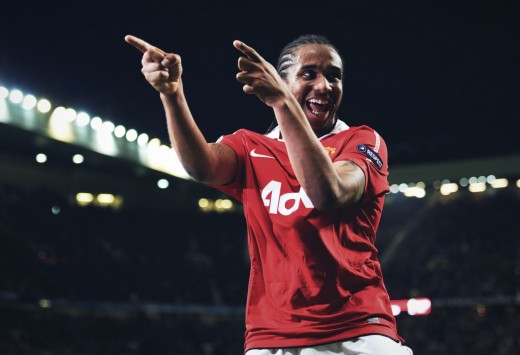
2008 - Anderson
With the world at his feet, Anderson stands as the first Golden Boy recipient to fall well short of the promise expected of him. Blessed with blistering pace, mesmerising flair and impressive physicality, the Brazilian had all the tools required to become a dominant midfielder. Exceptional vision and magnetic ball control, the tricky midfielder looked destined to be Brazil’s next megastar, earning comparisons to the great Ronaldinho.
Born in Porto Alegre, Anderson first rose to prominence under the Grêmio banner, having risen through the club’s academy ranks as a teenager. Although a short stint, the creative midfielder quickly became a household name, scoring the decisive goal to seal the club’s promotion back to the top flight of Brazilian football. Already adored by Grêmio supporters, the young playmaker cemented his reputation at the 2005 FIFA Under-17 World Championship in Peru, earning Player of the Tournament honours for Brazil.
Showing the technical brilliance and creative spark that made him touted for greatness, Anderson signed for Porto at just 17 years old, making his debut in March 2006. Despite his progress being halted by a broken leg, the gifted prospect continued to showcase the immense potential that earned him global recognition.
Anderson’s ascent to European stardom was completed in the summer of 2007, when Manchester United secured his signature for a reported €30 million. Despite struggling to adapt to the physical demands of English football and being deployed in a deeper role than accustomed to, the skilful playmaker still delivered moments of magic. Hailed as the heir to Paul Scholes, the Brazilian displayed tantalising vision in attack, brute force in defence, and the technical flair in midfield that first captured the attention of Sir Alex Ferguson.
Winning both the Premier League and UEFA Champions League in his debut season, Anderson exhibited the relentless stamina and dynamic ball-carrying ability that left United fans salivating at his immense potential. Unfortunately for the Old Trafford faithful, those early signs of superstardom would remain mere teases, with the Brazilian failing to elevate his game to the level required as critics began to question his mentality and work ethic. Several injuries, including a serious car crash in July 2010, halted his development, preventing the talented midfielder from ever finding consistency.
Seemingly returning to his best form in 2011, Anderson became an integral member of United’s high-energy attacking side, crowned champions in 2012. However, injuries would again cut the playmaker’s momentum short, with a lack of fitness or form hindering his opportunities under David Moyes. Continuing to fall down the pecking order, Anderson eventually returned to Brazil for Internacional, enduring a disappointing stint, plagued by further injuries and poor effort. A brief spell with Turkish side Adana Demirspor in 2020 marked the bitter end of a career that had once promised so much more.
Unable to replicate the extraordinary performances that had made him so highly sought after, a combination of injuries, off-field issues, and wavering focus gradually stunted his development. An unreal talent that endeared himself to the Stretford End, the once fan-favourite was often criticised for a lack of professionalism.
“Anderson was a player that used to frustrate me sometimes. This kid won the Golden Boy, that everyone goes mad about now, he won it when he was at Porto, best young player in Europe. The kid was unreal talent-wise but we have a WhatsApp group we always talk about, where he gets hammered.”“We always appreciate his ability but we’re all frustrated that he didn’t properly apply himself like he could have, because if he did, he might not have got injured as much as he got.”Rio Ferdinand on Anderson’s talent and lack of discipline
A career filled with extraordinary highlights and heart-wrenching downfalls, Anderson’s greatness was only offered in tantalising glimpses, leaving football purists to ponder what could’ve been.
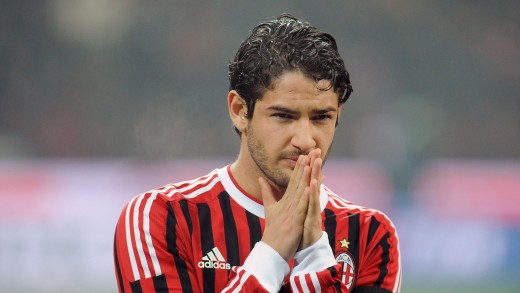
2009 - Alexandre Pato
One of the most tragic stories on this list, we will never truly know how high Alexandre Pato might have soared after his electrifying introduction to the game. With an eye for goal and the creativity to match, the Brazilian, like so many others on this list, seemed destined for greatness. His dribbling prowess and technical skill allowed him to thrive in any attacking role, drawing similarities to national icons Kaká, Romário and Ronaldo. Unstoppable at his peak, Pato could terrorise defences as a prolific scorer while also orchestrating the counter-attack with sublime vision.
After several years in the Internacional youth system, he made his first-team debut in 2006, scoring in the opening minute. A dream debut, the striker went on to enjoy an exceptional first year of professional football, scoring 12 goals across 27 appearances, and helping his side win their first-ever FIFA Club World Cup.
A mesmerising debut year caught the attention of Europe, with AC Milan signing him for €24 million. Bringing his scintillating form from Brazil to Italy, Pato quickly became a key figure in Milan’s attack, scoring on his Serie A debut against Napoli. Displaying the explosive athleticism and technical brilliance that had made him a star in South America, he finished his first full season in Italy as the club’s top scorer. The first Brazilian to be named Serie A Young Footballer of the Year, 2009 marked the culmination of his ascent to football stardom, crowned the Golden Boy recipient of that year.
The year 2010 would tragically signal the start of his decline, as injuries began to mount. Thigh problems, ankle issues, and an Achilles tendon injury gradually eroded the speed and mobility that once made him a dynamic threat. Coupled with the pressures of superstardom, relentless media scrutiny, and living far from home, Pato’s mental focus wavered.. Struggling under astronomical expectations, his extraordinary potential was increasingly overshadowed by setbacks, with the mental stress taking its toll.
“Then in 2010 I started to get injured all the time. I lost confidence in my own body. I got scared of what people would say about me. I’d go into training thinking, I can’t get injured. If I did get hurt, I wouldn’t tell anyone. I’d be recovering from a muscle problem, then I’d twist my ankle and play on. It was swollen like a ball, but I didn’t want to let the team down. I wanted to please everyone. That was one of my flaws.”Alexandre Pato — The Players’ Tribune
Falling victim to the cruelty of the media and countless doctor visits, Pato feared his career might be over. A €15 million return to Brazil for Corinthians looked to be a step in the right direction for the skilled dribbler, maintaining his streak of scoring on club debut. Despite enjoying an injury-free stint, the pressure of a big-money move back home surmounted, culminating in a failed paneka attempt in the Copa do Brasil quarter-finals against Grêmio.
Regaining his confidence at São Paulo, Pato found himself back in Europe with Chelsea, in a move that ultimately failed to reignite his career. A brief loan spell, which yielded just two appearances, the former generational prospect would bounce across various clubs across multiple continents, before retiring at the age of 35.
Though flashes of his former brilliance appeared, Alexandre never fully recaptured the spark that once saw him destined for greatness. Electrifying at his peak and exceptional with the ball at his feet, we will never know just how far the Brazilian international could have flown. Despite the tragedy of his story, football purists should remember him for the joy and excitement he brought whenever he played at his absolute best.
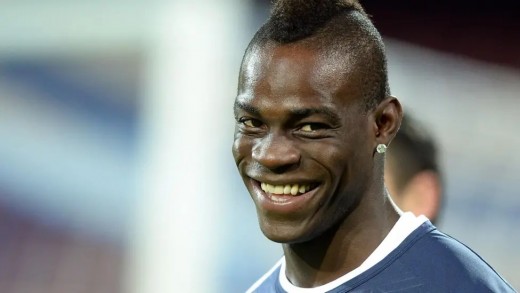
2010 - Mario Balotelli
A life lived on the edge of brilliance and controversy, Mario Balotelli’s career has been nothing short of tumultuous. Rising to prominence with a dazzling blend of speed, strength, and lethal finishing, the Italian forward’s brilliance on the pitch was often overshadowed by his notorious off-field antics. Versatile in attack and exuding a swagger that mirrored his larger-than-life personality, the agile striker was a commanding presence in the 18-yard box, regularly overpowering opponents with his physique. Despite the potential his moments of brilliance promised, his poor work rate and immature attitude cost him dearly. A gifted player with the world at his feet, the volatile character’s myriad of controversies ultimately defined what should have been a legendary career.
The anarchic journey of ‘Super Mario’ begins in the north of Italy, where he signed for Inter Milan in 2006. Transferring from local side Lumezzane, the spectacular forward first gained national recognition after scoring a brace against Juventus in the Coppa Italia quarter-finals. Over the next few years, he would continue his ascent to football superstardom, becoming Inter Milan’s youngest goalscorer in the UEFA Champions League in 2008. Reaching double figures in back-to-back campaigns, Balotelli was widely regarded as one of the top prospects of his generation as Inter claimed consecutive Serie A titles in 2009 and 2010.
Despite his genius on the pitch, his off-field antics continually stole the spotlight, with then-manager Jose Mourinho questioning his work ethic. A poor attitude, inconsistent performances and a growing list of in-game theatrics enhanced tensions between the gifted teenager and senior members of the squad. As the stories grew wilder and more chaotic, tensions reached a boiling point with the club, leading to the Golden Boy recipient taking his talents to England in 2010.
“Mario was good fun. I could write a book of 200 pages of my two years in Inter with Mario. But the book wouldn’t be a drama, it’d be a comedy”Jose Mourinho, reflecting on his time with Mario Balotelli in Italy
Reuniting with Roberto Mancini at Manchester City, Balotelli's speed and physical strength excited many, though disciplinary issues persisted. Named man of the match in the 2011 FA Cup final, the creative forward had many at the club optimistic about his potential. Unfortunately, his strong 2011–12 season was overshadowed by further controversies, from on-field outbursts to reckless behaviour off it. Returning to the headlines for all the wrong reasons, the perplexing star was, nevertheless, a brilliant player on his day. From his iconic celebration against Manchester City to assisting the greatest moment in Premier League history, there’s no doubting Mario Balotelli’s status in English football folklore.
In 2013, Balotelli returned to Italy with AC Milan. Despite his growing reputation as a volatile figure, the talented striker remained an elite prospect, with performances at the 2012 European Championships reminding fans of his brilliance. A sensational start saw him score twelve goals in twelve appearances, suggesting a resurgence.
In a decision he would later regret, Mario returned to England in 2014, this time in Liverpool colours. A disastrous return to the Premier League, the striker scored four goals in 28 appearances, with behavioural issues again grabbing the headlines. A subsequent loan back to AC Milan failed to reignite his career, with injuries stalling his progress. Unwanted by Liverpool manager Jurgen Klopp, the controversial enigma moved to Nice on a free transfer.
Away from the spotlight and intense scrutiny that poisoned his career, the clinical finisher enjoyed a successful two seasons in France, scoring 43 goals across two seasons. Yet old habits persisted, and conflicts with management eventually sidelined him once more. Returning to pre-season out of shape and struggling to find form in the opening months of the 2018–19 campaign, a growing conflict with Patrick Vieria resulted in the once generational talent being dropped from the first-team squad.
In the following years, Balotelli drifted through clubs including Marseille and Adana Demirspor. As of writing, he is without a club, signalling that the curtain may soon fall on a career that once promised greatness.
Mario Balotelli’s story deserves its own epic. His résumé is littered with incidents that overshadow many of his achievements, yet there is no denying the brilliance he displayed at his peak. A restless icon, often the target of mercurial criticism and vile racism, Balotelli remains a figure of endless fascination. Love him or loathe him, ‘Super Mario’s’ journey was extraordinary, chaotic, and unforgettable.
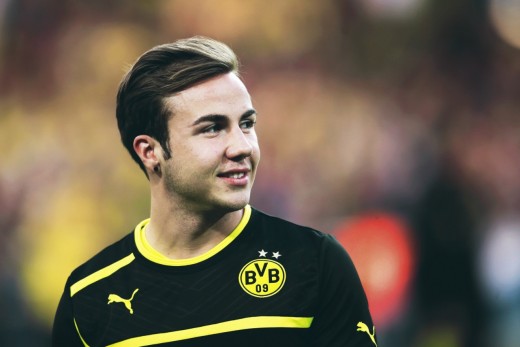
2011 - Mario Götze
A career defined by staggering highs and heartbreaking setbacks, Mario Götze’s journey stands as both an inspiration and a cautionary tale for every young dreamer. Rising through the Borussia Dortmund academy, he captivated the world with his immaculate technique, tight dribbling and instinctive creativity. Capable of operating across various midfield positions, he was most potent as an attacking midfielder or false nine, with the gifted prodigy heralded in some circles as the “German Messi.”
His meteoric rise began in November 2009, debuting against Mainz 05. It was the following season, however, when he truly erupted. Electrifying Bundesliga crowds with his vision and composure, he delivered 21 goal contributions in 33 appearances as Dortmund secured the first of their consecutive league titles. Just as the world began to marvel at his brilliance, a series of injuries halted his momentum and cast the first shadow over his ascent.
Though sidelined for much of the 2011–12 campaign, he returned in 2012–13 at full force, amassing a career-best tally in the Bundesliga and forming a remarkable partnership with Marco Reus. Their synergy became one of the most iconic duos of the era, guiding Dortmund to the UEFA Champions League final. It marked the peak of his first chapter in black and yellow, as Bayern Munich triggered his release clause soon after.
The move to Munich, a childhood dream realised, proved bittersweet. Although he collected trophies and delivered moments of pure ingenuity, he struggled to shoulder the relentless expectations placed upon him. At a club where excellence was mandatory rather than celebrated, inconsistent performances invited scrutiny. Even legends such as Franz Beckenbauer openly questioned his drive. Unable to silence the critics, Götze returned to Dortmund in 2016 seeking redemption.
A glimmer of revival soon faded with an alarming decline in his physical condition. Reports of an underlying illness eventually revealed a metabolic disorder, later diagnosed as myopathy. Fatigue, weight fluctuations and recurring absences reduced his influence to flashes rather than full performances. Despite undergoing treatment and fighting to remain on the pitch, he never fully recaptured the magic that once defined him
In 2020, he ventured to PSV, rediscovering stability and lifting the KNVB Cup. Two years later, he returned to Germany with Eintracht Frankfurt, reinventing himself in a deeper role. No longer reliant on pace or explosiveness, he now dictates play with intelligence, refined vision and measured control. Though the flamboyance of youth has softened, his touch of imagination endures. Liberated from suffocating expectations, he plays with renewed peace, intent on simply enjoying the game.
For all the twists and tragedies of his career, Mario Götze’s legacy rests on a single immortal moment. In the 2014 World Cup final, deep into extra time, he cushioned André Schürrle’s cross on his chest and volleyed it into eternity. That strike delivered Germany their fourth star and etched his name into football folklore.
He may not have fulfilled the destiny many foresaw, but few players have ever lived a dream so completely. Long after debates end and careers are forgotten, Germany will always remember Mario Götze, not for what he became, but for what he made a nation feel on one unforgettable night in Brazil.
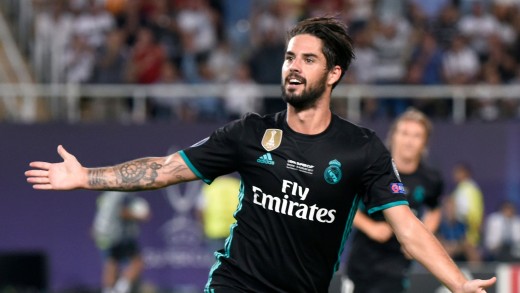
2012 - Isco
Perhaps never reaching the immense expectations laid upon him, Isco has still enjoyed a decorated career, most could only dream of. Quick, skilful and inventive, the Spanish midfielder was a technical magician. As naturally gifted as they come, his agility and attacking flair were clear from an early age. Blessed with mesmerising dribbling and exquisite ball control, the Valencia academy graduate often appeared effortless in attack. What elevated the Spanish captain’s game to the elite level was his sublime vision and uncanny ability to read the game. Always one step ahead, his anticipation, playmaking, and command of the game’s tempo earned him comparisons with Zinedine Zidane.
Isco’s breakthrough to the pinnacle of Spanish football commenced in mid-2011, after Málaga activated his buy-out clause. Returning to his home province, the brilliant midfielder spearheaded a golden era for the club, as they qualified for the UEFA Champions League for the first time in their history. Continuing to dazzle audiences with the hypnotic skill that once saw him heralded as the country’s most promising young player, Isco was awarded the Golden Boy prize in 2012. The height of his time in the south of Spain came in the Champions League, where he guided his side to a historic quarter-final appearance. Scoring in the round of 16 against FC Porto, the creative wonderkid had truly announced himself to the world.
By the European summer of 2013, Isco was again on the move, signing for Real Madrid for €65 million. In his nine years with ‘Los Blancos’, he won 18 major titles, including four Champions League titles, and three La Liga crowns. Despite flashes of brilliance, the Spanish midfielder struggled to cement a starting position throughout his tenure. From managerial changes and tactical shifts to fierce competition in his position, Isco never truly settled in the Spanish capital. Regardless of these obstacles, he continued to fight for his position and was consistently praised for his versatility.
Often stuck behind the iconic midfield trio of Kroos, Casemiro, and Modric, Isco’s opportunities to play in his best position were limited throughout his prime. By his late 20s, he no longer appeared capable of meeting the physical demands of the club, gradually falling down the pecking order. In a lesson painfully learnt by fellow Madrid stars Mesut Özil and James Rodríguez, Isco’s preferred position as a floating 10 never matched Real Madrid’s playstyle.
Following a disastrous season at Sevilla, Isco signed with Real Betis on a one-year loan for the 2023/24 season. With an outstanding 19 man-of-the-match awards, the Spanish genius looked to have finally returned to his best football, discovering the consistency that had previously eluded him. A fantastical career resurgence, Isco continues to ply his trade for Real Betis, with his football renaissance, earning him a return to the Spanish national team.
A career defined by injury, inconsistency and limited opportunities, Isco never flourished at the highest level of European football. Yet a career filled with dazzling moments, individual brilliance, and tactical mastery ensures that, while not the world-beater many had hoped, the Spanish magician’s legacy remains one of the most decorated and enchanting of modern football.
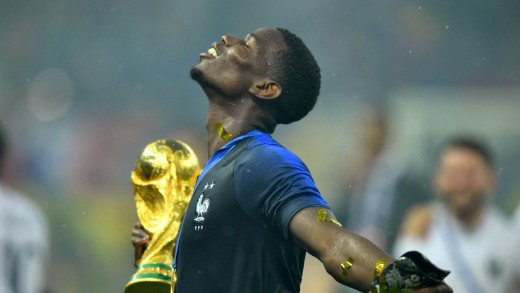
2013 - Paul Pogba
Among the most polarising figures in modern football, Paul Pogba remains a player whose legacy continues to divide opinion. Powerful, skilful and creative, the Frenchman embodied the perfect modern midfielder, capable of igniting attacks with audacious flair while overpowering opponents with raw physicality. Often compared to Patrick Vieira, his drive, leadership, and ingenuity saw him hailed as one of the finest midfielders of his generation. A prodigious talent blessed with everything, he became one of football’s greatest victims of excruciating expectation.
His journey began in the academy of Manchester United, having signed from French outfit Le Havre. With first-team chances limited, Pogba departed for Juventus in 2012, a move that left Sir Alex Ferguson disappointed. In Turin, he erupted onto the world stage, announcing himself with relentless energy and authority. By 2013, he had claimed the Golden Boy award, expanding his influence year after year as he moved further up the pitch. Lauded for his leadership and tireless commitment, Pogba conquered Italian football with his blend of creativity, technique and strength unlike anything seen before. Mesmeric displays in black and white, alongside an impressive 2014 World Cup campaign, left many believing he was destined for immortality.
In 2016, after a dominant spell in Italy, he returned to Manchester United not as a promising prodigy, but as one of the most celebrated players in the world. His transfer commanded a then-record fee of €105 million, fuelling expectations at a club desperate to reclaim its throne amongst the elites of English football. Burdened with the hopes of millions, Pogba’s second spell in red came under fierce scrutiny. Criticised for inconsistency and alleged indiscipline, he was harshly judged for United’s broader decline. Managers questioned his influence, and media narratives painted him as a disruptive presence, overshadowing his undeniable brilliance. Most infamously, his fallout with Jose Mourinho saw the generational talent labelled a “virus”, as Pogba’s flashes of brilliance failed to satisfy the burden of expectation placed on his shoulders.
Yet even amidst hostility, Pogba delivered moments that defied an era. He orchestrated comebacks, produced world-class performances and secured silverware, including the 2017 Europa League and a place in the 2019 PFA Team of the Year. Injuries hindered his rhythm, and the recurring label of a player brilliant “on his day” continued to haunt him.
While he never carried United back to eternal glory, Pogba ascended on the international stage. At the 2018 World Cup, he formed a formidable partnership with N’Golo Kanté and was granted the freedom to play at his expressive best. With a decisive strike in the final against Croatia, he fulfilled a dream shared by millions, lifting football’s ultimate prize.
The years following his 2022 departure from Manchester were marred by more misfortune. Returning to Juventus, he faced a doping ban in 2023. Though he denied wrongdoing, he received an eighteen-month suspension, leading to the termination of his contract in 2024. Now back in France with Monaco, he seeks redemption and fitness, aiming to script one final chapter of a chaotic career.
“The only thing I say is that it happens with almost everybody in some moments of your career: you lose a little bit the sense of who you are and what you have to be. The season after France won the World Cup, I think Paul came back different. The World Cup brought him into a dimension where football was not the most important thing for him. Sharing the philosophy of everyone; everyone with the same level of responsibilities. I am not enjoying Paul’s situation at all.”Jose Mourinho’s comments following Pogba’s doping ban.
Paul Pogba’s story is one of breathtaking highs and heartbreaking turbulence. An artist shackled by expectation and circumstance, he was at his most electrifying when allowed to roam freely and express the full extent of his imagination. His career, shaped as much by flawed environments as personal decisions, will forever challenge simple judgment. Regardless of opinion, Pogba stands as an emblem of his generation, a captivating enigma who made football feel poetic.
Gifted with extraordinary talent yet burdened by immense expectations, the careers of the first eleven Golden Boy winners were nothing if not polarising. Click here to see how they measure up against the next decade of rising stars.
This content reflects the personal opinions of the author. It is accurate and true to the best of the author’s knowledge and should not be substituted for impartial fact or advice in legal, political, or personal matters.
© 2025 Peter Harper-Bilreiro

